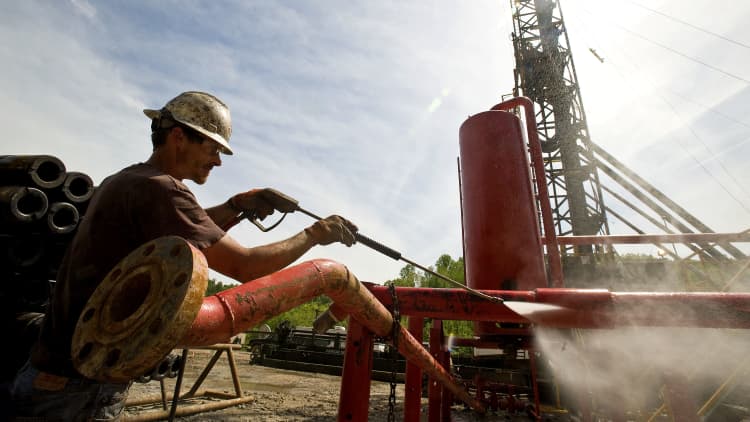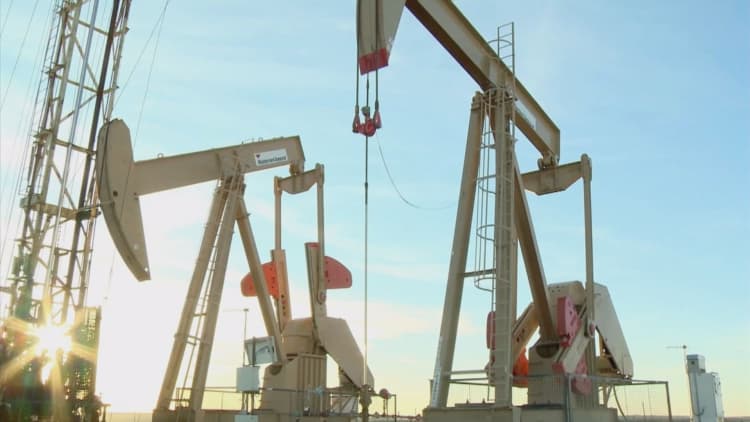
U.S. shale producers will increase their output in April, building on increases in recent months as higher oil prices make more American drilling profitable, according to the Energy Information Administration
The EIA on Monday forecast net oil production from seven major oil and natural gas basins will increase by 109,000 barrels a day next month. That would put output from those basins at nearly 5 million barrels a day.
The latest Drilling Productivity Report provides further evidence that U.S. shale is responding to higher prices brought on by output cuts by OPEC and other major crude-producing nations.
The monthly projections have been marching steadily higher since December, the same month 11 oil exporters agreed to join production cuts led by the Organization of the Petroleum Exporting Countries in a bid balance an oversupplied crude market.
The Permian Basin, of west Texas and southeastern New Mexico, once again accounts for the lion's share of the production gains. EIA expects drillers to raise production by 70,000 barrels a day in April.
Drillers in the Eagle Ford region of southeast Texas are pumping more, as well. The region is set to increase output by 28,000 barrels a day next month, EIA said. In its last forecast, Eagle Ford producers were seen upping production by 14,000 barrels a day.
Production growth is expected to decline in April in Colorado's Niobrara region, to 11,000 barrels a day. Production in North Dakota's Bakken Shale is seen declining by 10,000 barrels per day.
The EIA data forecasts recent and near-term drilling activity in seven major oil-producing regions that have driven about 90 percent of U.S. output growth in recent years.
Drillers in those regions inject water, minerals and chemicals into wells to fracture shale rock and release oil and gas. Producers scaled back this expensive method, called hydraulic fracturing or fracking, during an oil price downturn that began in 2014.
Shale drilling started to recover in the second half of 2016 as oil exporters prepared to reduce their output in a bid to reduce brimming stockpiles of crude.
While OPEC's output cuts agreed to late last year have boosted oil prices, resurgent U.S. supply has capped gains, keeping crude futures in a tight range.
Futures have lately broken out of that range on worries about U.S. oil production and swelling crude inventories. Last week, oil prices plunged 9 percent after data showed a ninth straight weekly increase in U.S. crude stockpiles. Traders are now keenly focused on U.S. drilling activity.
U.S. crude ended Monday's session 9 cents lower at $48.40, a closing low dating back to November, just prior to the announcement of OPEC's production cuts.
Watch: Oil hits 3-month lows



